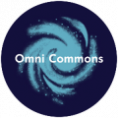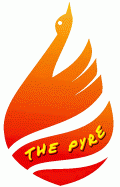|
|
Can you tell I’m pretty deeply immersed in the world of academic research these days? Sharing is caring, and I’d like it to be known that I support collaboration over competition when it comes to the production of knowledge. As such, I encourage you to forward this post to anyone you know who could use it (especially thesis writers).
1. EndNote Web – You may have heard of EndNote- a comprehensive program for organizing citations and creating bibliographies that is used extensively by thesis writers- but you probably didn’t know that you don’t need to download or buy the expensive program (sold online for $250), which has numerous compatibility issues, anyway. EndNote Web is, first of all, FREE, and secondly, maintains your personal database of citations online. So if you, like me, are poor and unable to obtain a compatible version of the program through the school’s software database, this online program is a godsend. Furthermore, with EndNote Web you can also search online journal and library databases within the site. Sweet.
2. bubbl.us – When crafting a paper, it can really help to visually outline it before you write. The best tool I’ve come across is bubbl.us, which allows you to fill in little bubbles and link them to one another either horizontally or vertically (see screenshot, below). In addition, you can share your bubble diagrams with others, and even let them collaborate in the outline’s construction. I always use this site to outline my thesis chapters, which I’ve shared with my advisor in the past.

3. Diigo – A really fantastic social bookmarking and annotation tool. Like del.icio.us, Diigo arms you with web browser toolbar that lets you publicly share and organize your website bookmarks. However, Diigo expands upon this premise by allowing users to highlight, clip, and make sticky-notes on the websites you bookmark- and this makes it a powerful research tool (especially if you’re me- prone to bookmarking websites that mention anything having to do with my thesis, and forgetting why they were important later).
4. The OWL at Purdue – This website is a must for anyone confused about the variety of citation styles and the rules for composing bibliographies. It extensively outlines MLA, APA, ASA, and Chicago styles, and in addition discusses various research issues. Most useful, in my opinion, is this page, which contains links to online guides for documenting electronic sources in various disciplines.
5. SurveyMonkey – This is the best free survey-generator I’ve come across, and I used it last year when conducting a survey on online social networking practices. The free version of the software lets you compose 10 questions, which can be multiple-choice, a rating scale, a matrix selection, or open-ended. You can also make it kinda pretty. After you make it, SurveyMonkey will help you collect responses by creating e-mail invitations, website popups, or simply a copy-and-paste link. You can also view responses, which are neatly organized for easy analysis.
Truth? I don’t consider myself a “techie,” because I actually mistrust technology a whole lot. Case in point: I received a hip (expensive) GPS locator (a TomTom to be exact) for Christmas. As I’m the type of spacey kid who gets lost at the drop of a hat but is constantly traveling about the East coast, it was a brilliant and wonderfully kind move on my parents’ part. I love how the female British voice I chose tells me to go “straight on!” after the Williamsburg bridge, but to be honest, I think the TomTom causes more havoc than it prevents.

Without warning, and quite frequently, it will simply lose the GPS signal. Now, when you’re making a dozen tiny turns in the span of two minutes, to suddenly not be given directions is dangerous, indeed. One can easily become dependent on the damn thing, but a word to the wise: copy down directions before you leave. Furthermore, keep a map in the car – or better yet, a road atlas for the entire country. While I’m excited to one day really test drive my TomTom by driving across the country, it definitely is not reliable enough to be my primary means of navigation.
However, on the plus side: one can do quick searches of the local area (for example, “Camping Grounds” or “Pizza” , use the TomTom to calculate navigation time down to the minute, and (if I had Bluetooth) check for possible traffic delays. It’s a great contraption, when it’s got a signal… , use the TomTom to calculate navigation time down to the minute, and (if I had Bluetooth) check for possible traffic delays. It’s a great contraption, when it’s got a signal…
On the topic of technology that simply fails, both Camino and Google Notifier (which used to give me satisfying *ding*s whenever I got a new e-mail) are acting completely screwy. Notifier has simply stopped being able to access my inbox and tell me what mail I have (even after a reinstall). Camino likewise has just started sucking- after a few minutes of normal functioning, it will simply stop being able to load any websites. Safari, on the other hand, works fine…
Don’t you hate it when you get attached to some technology that just inexplicably stops working? Someday I’ll give it all up, move back to the land, get me a chicken and grow vegetables…
The introduction of the Internet in my life occurred at the pivotal juncture between childhood and adolescence. Moreover, for me this transition was made even more definitive by my family’s move from the countryside of upstate New York (where our backyard merged with a local farmer’s berry crops) to the nearby small college town of Clinton. The move was made in large part so that I could legally attend one of the better public schools in the area, having graduated from a tiny private Catholic elementary school in the same town. Not only was I the new kid, but I was a shy bookworm who still let her mother choose the clothes she owned. Overwhelmed, I found solace and freedom on the Internet, where it didn’t matter whom you knew or what you wore. Certainly, my online interactions were not always pleasant, but I at least had time to craft a witty response, unhindered by my tendency to blush furiously and lose the ability to speak in response to direct confrontations.
Like all adolescents, I sought an environment in which I could experiment and play. Many of these explorations were marked by transgressions of the “social laws” that typically guide young adolescent behavior, such as adult supervision, as well as more general social norms of aggression and sexual conduct. My first forays into the veritable human jungle of online chat rooms were my own secret dramas, the social risks of which were null (in the “real world,” anyway). Early on, I learned to avoid the America Online chatrooms, preferring the more anonymous, explorative diversity of Internet Relay Chat (IRC) . On AOL, I was frustratingly limited to a single username linked to my main e-mail inbox, meaning that anyone I conversed with in AOL channels could send me messages whenever I was online (unless, of course, I blocked them). With IRC, I was free to create a new name for myself each time I logged in, free to experiment without risk of exposing my true identity. Often, I attempted to pass for a college-aged woman with a name like “Wildfire,” and was delighted to find I could successfully banter intellectually with my faceless peers. Many of the more popular chatrooms felt a bit like entering a bar: one would immediately be asked “a/s/l? (age/sex/location?)”. To expose oneself as a young female would be a fatal flaw, indeed; it would inevitably result in a barrage of messages, the likes of which taught me a good deal about men, sex, and danger. Oftentimes, when I didn’t feel like dealing with the lecherous come-ons of lonely men, I would choose an androgynous handle. Over time, I developed the ability to discern between the aforementioned squalor and “quality” chatrooms, and came to spend a good deal of time competing with other users in word games monitored by a robot, or gossiping in fan-based chatrooms about the last episode of The X-Files.
“Jenneh,” as I was known to those I considered my closer (albeit still faceless) Internet friends, was the creator of a website composed mostly of favorite quotes, self-fashioned graphics and animations, and long lists of “favorites.” Anyone who was at all Internet-savvy during this time period (often younger users) had a personal webpage, usually obtained by creating an account with a free web-hosting provider such as AngelFire or Geocities. Usually, these pages were loaded with bad HTML, such as flashing text and continuous GIF animations. Creators of such sites linked to one another based on the relevancy of another site’s content (a direct recommendation), or through interest-based “webrings” located on the page (typically not affiliated with the site owner herself) . Such custom-made, egocentric webpages parallel today’s online social networking profiles, where everyone is an author without an editor. Today, such webpages/profiles are usually linked together through social networks increasingly based on offline ties. Certainly, the medium for self-expression on the Internet has evolved, but the desire for transgression, the search for connection, and the allure of anonymity and fantasy continue to be key factors in why people choose to engage with one another online in the way that they do.
My first sexual “encounter” occurred in the ethereal realm of cyberspace at the age of 13, where I also fell in love with a boy I would never end up meeting face-to-face. Though it would be another two years until my first offline sexual interaction, the sense of intimacy, excitement, awkwardness and joy felt no different. We’d gotten to know one another in the chatroom of a downloadable game called HoverCraft, where players met in the game’s chat rooms to challenge each other to virtual races in virtual hovercrafts. In this world, I was a renowned “expert” at the game, and so was he. After races, which we usually won, we would often linger on the course, represented by our little red hovercrafts, typing to each other into a void made somehow more visceral by our frequent games of hide-and-shoot. Though we chatted for hours each night for several months, when he finally called me on the phone our conversation was stilted. His voice sounded too feminine, too young. I realized that my attraction to him had hinged in large part on fantasy, fueled by the titillating unknown. Nevertheless, our bond was not entirely imagined; it was, most certainly, the result of what I have come to call “mind-melding,” when empathy, vulnerability, and love coalesce to allow for the kind of connection that transcends the petty hierarchies of appearance, social status, and even spatial proximity itself. That year, following a recent divorce from her cheating husband, my best friend’s mother moved to Germany to marry and live with a man she’d met over the Internet and gotten to know over a period of 10 months. As parents raised eyebrows and murmured their disdain for such “impractical,” “pathetic” behavior, I remember thinking to myself, “the world is certainly evolving faster than they can understand.” My friend’s mother remains happily married in Germany to this day.
Last week, TechCrunch pointed me to a new and wonderfully whimsical website, CookThink.com, that magically conjures up recipes according to your current craving. Well, maybe semantic web searches can’t really be called “magic,” but they certainly offer an array of new possibilities for communication and the interweb.
At CookThink.com, I curiously clicked the “Mood” section and, giggling, clicked “forceful”:

“Forceful” was added in to the orange box to the right, after which I clicked “cookthink it!” Much to my delight, the following recipe appeared on my screen: Mexican Pilaf With Cumin and Jalapeño. For the record, all of these things are fucking delicious. “Is this what you’re craving?” the page asked me. Why yes, yes it is… but, moving on to the exploration…
What popped up on my screen was not just a recipe. Along the left-hand side was a selection of other recipe the current one “goes with,” in this case White Bean and Broccoli Burritos With Cilantro and Fish Tacos With Avocado, Feta, and Cabbage, as well as some “related tips:” Why are some jalapeños hotter than others? How hot is a jalapeño? Along the right-hand side was a single ad requesting your donation of $35 to provide a hand pump for drinking in Cambodia. When I refreshed, the ad space was requesting that I “help stop animal cruelty& suffering.” At the top of the ad were the words “BlogHer Ad Network,” which states on its homepage: “BlogHer is the definitive guide to what women who blog and their readers are doing and talking about all over the Internet.”
So, that website is pretty sweet.
I like this method of searching. It should be expanded to all things. Music, for example, is something I’d love to come across by searching for specific moods. While online radio sites like somafm and besonic.com offer a handful of “mood options” and AllMusic.com lists descriptive words for bands, songs, albums and artists that allow for viewer input, I was unable to find a working database of music searchable by mood. Can anyone help me out?
|
|







 , use the TomTom to calculate navigation time down to the minute, and (if I had Bluetooth) check for possible traffic delays. It’s a great contraption, when it’s got a signal…
, use the TomTom to calculate navigation time down to the minute, and (if I had Bluetooth) check for possible traffic delays. It’s a great contraption, when it’s got a signal…